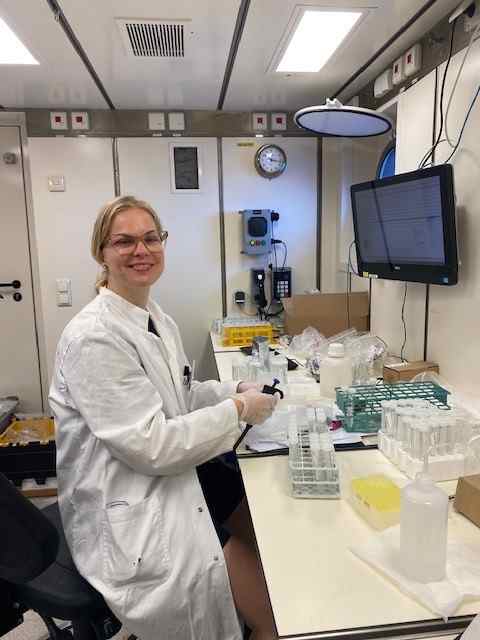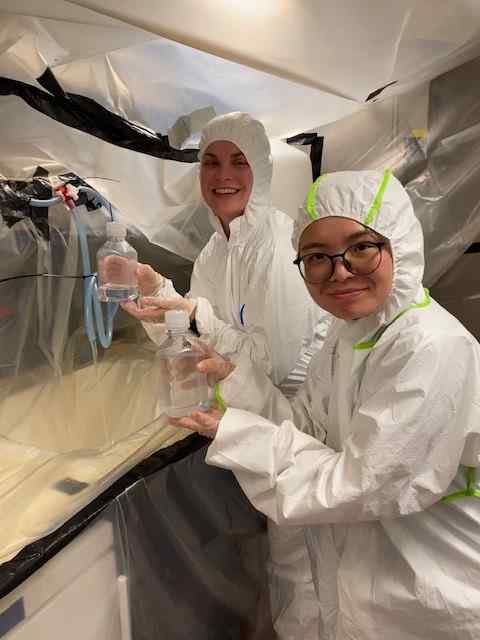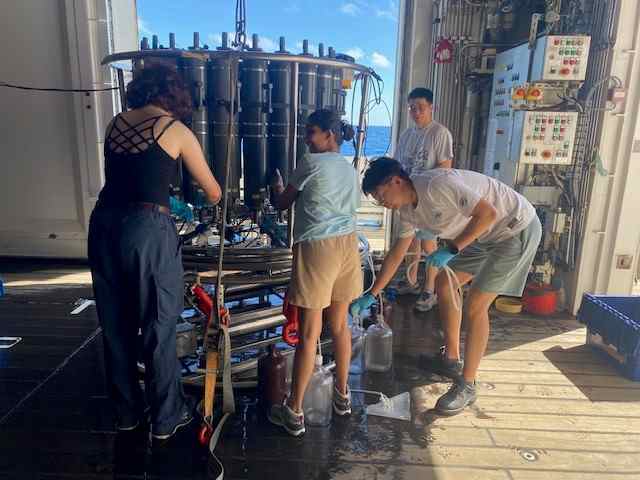My name is Anne, and when describing my Ph.D. research, I always had steady ground under my feet. I was working on contaminant leaching from agricultural fields to the soil and groundwater to predict adverse effects on our drinking water supply from groundwater. Water was always the invisible media I would need to describe with computational models. Now on the Sonne, I am surrounded by nothing but water for 52 days.

I learned about the German research vessels on television and from colleagues doing geophysical measurements on them. I was intrigued by the idea of conducting research in remote places and discovering the governing environmental processes there. Compared to computational work in my Ph.D. thesis, lots of data collection and measurement on the research vessel seemed like a hands-on experience supporting climate change research. Having some free time between two job positions, I got the opportunity to join the SO298 cruise.
The preparations for the cruise started many months before. Measurement devices and general laboratory equipment such as gloves, bottles, chemicals, and many plastic bags were sent in containers to our departure harbor. I also learned that frozen food and preservable food were sent from Germany. Like this, we can have German Bratwurst and potatoes in the middle of the pacific ocean.
In the first days, we had to unpack the containers and prepare our laboratory spaces. In addition, we had to secure all equipment in the laboratories to prevent damage during rough seas. As we expect low concentrations of the constituents we measure, such as trace metals, nutrients, or various stable isotopes, we have to be extremely careful not to contaminate the samples and work as cleanly as possible. In the labs, the motto is “Sharing is caring,” as supply and space are sparse. This is especially helpful for me, as with my lack of training, I tend to break things or need help with instructions. A major part of the lab work here on the ship is to clean bottles and vials. So, for example, I expect to collect around 700 water samples for analysis, and it would be impossible to bring 700 clean bottles on the ship for this.

I sometimes struggle with work hours: we stop on our transect at defined locations to take water samples from different depths and record the seawater’s temperature, density, and conductivity. These stations can be at any time of the day. So we wake up several times at night to take samples every few days. Additionally, some measurements must be conducted right after sampling or within a certain period, changing working hours to either day or night. Hence, consecutive eight hours of sleep are not possible every day.

Life on the ship is quite comfortable. Breakfast, two warm meals, and coffee and cake are prepared for the crew and the scientists. Also, my room is cleaned once per week. I only have to do my laundry. There is also a board shop where snacks, merchandise, and toiletries can be bought. I easily find company if I wish for some social interactions after hours alone in the lab, but also, with my single cabin, I can find space to relax and work in a peaceful and quiet environment. Often you can find a group to sit together and watch the sunset, a movie, or a yoga class together. At the end of the day, the vessel rocks me gently to sleep.